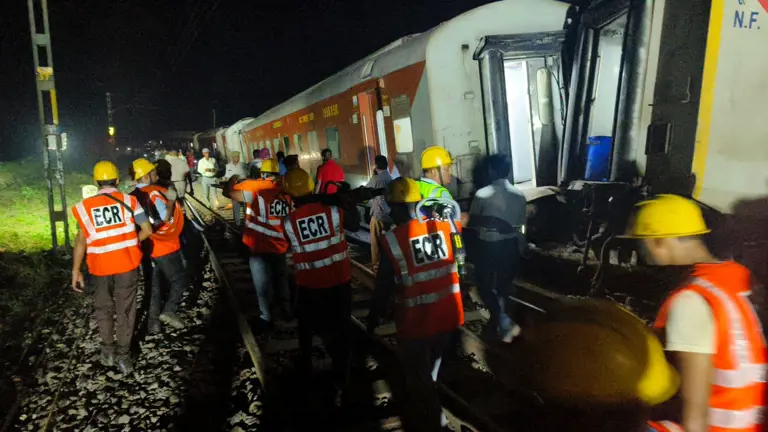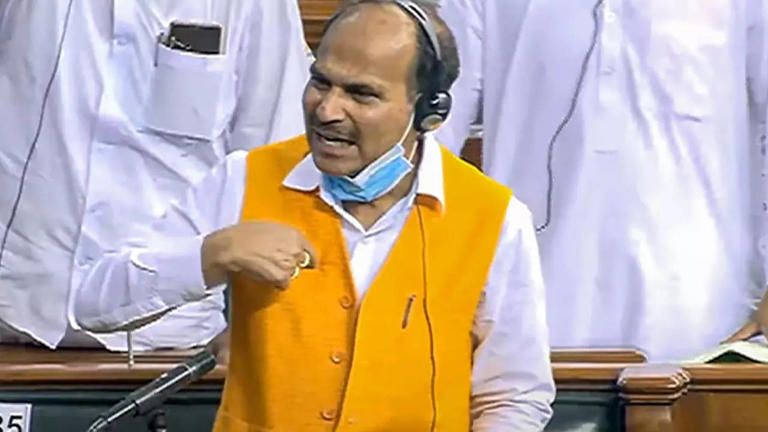‘Where are your anti-collision devices’: Adhir Ranjan Chowdhury slams Centre over Andhra train accident

‘Where are your anti-collision devices’: Adhir Ranjan Chowdhury slams Centre over Andhra train accident
The recent comments made by Adhir Ranjan Chowdhury, a prominent Congress leader and former rail minister, regarding the train accident in Andhra Pradesh highlight the growing concerns surrounding railway safety measures and the potential lapses in implementing essential anti-collision devices. Chowdhury’s criticism of the central government’s approach underscores the need for stringent safety protocols and the effective deployment of advanced technologies to prevent such tragic accidents from occurring.
The collision between two trains in Vizianagaram, Andhra Pradesh, resulting in the unfortunate loss of lives, has prompted swift action by the East Coast Railway officials. The cancellation of 33 trains and the rescheduling of six others demonstrate the immediate impact of the accident on the region’s railway operations and the subsequent efforts to ensure passenger safety and operational efficiency.
As investigations into the causes of the accident continue, it becomes imperative for the concerned authorities to prioritize the implementation of robust safety measures and comprehensive protocols to prevent similar incidents in the future.
By addressing the potential shortcomings in safety protocols and investing in the deployment of advanced anti-collision devices, the railway sector can mitigate risks and uphold the safety and well-being of passengers and railway personnel. The efficient management of railway operations and the enforcement of stringent safety standards remain crucial in upholding the integrity and reliability of the country’s railway infrastructure.
Adhir Ranjan Chowdhury’s recent remarks, as reported by ANI, shed light on the pressing concerns surrounding railway safety in India, particularly in the context of the recent train accidents in Balasore, Andhra Pradesh, and Buxar, Bihar. By highlighting these incidents, Chowdhury underscores the critical need for the government to prioritize the enhancement of safety measures and protocols within the country’s railway infrastructure.
Chowdhury’s criticism of the government’s emphasis on promoting initiatives like the Vande Bharat express without ensuring comprehensive safety measures within the railways points to a potential disconnect between the administration’s priorities and the urgent need for robust safety protocols. The reported incidents of rail collisions and derailments further emphasize the importance of implementing effective safety mechanisms and anti-collision technologies to prevent accidents and safeguard the lives of passengers and railway personnel.
As the government continues to undertake various infrastructure and modernization projects within the railways, the significance of simultaneously addressing safety concerns cannot be overstated. It is imperative for the authorities to allocate sufficient resources and implement comprehensive safety measures that align with the scale of the ongoing modernization efforts, ensuring the seamless and secure operation of the country’s railway network. By prioritizing the safety and security of the railways, the government can uphold its commitment to ensuring the well-being and comfort of passengers and maintaining the integrity of the national railway system.
The tragic train collision in Andhra Pradesh’s Vizianagaram district, resulting in the loss of lives and injuries to several individuals, underscores the urgent need for robust safety measures and comprehensive infrastructure upgrades within the country’s railway network. Adhir Ranjan Chowdhury’s criticism of the government’s purported oversight of fundamental safety requirements, including the implementation of essential anti-collision devices, highlights the critical importance of prioritizing passenger safety and security in all railway operations.
The reported collision between the Visakhapatnam-Palasa and Visakhapatnam-Ragada passenger trains, resulting in the derailment of several coaches, further emphasizes the necessity of proactive safety protocols and swift response mechanisms to mitigate the impact of such tragic incidents.
The prompt deployment of rescue operations, along with the involvement of local administration, the National Disaster Response Force (NDRF), and ambulances, signifies the collaborative efforts to provide immediate assistance and support to those affected by the accident.
As the investigation into the causes of the collision continues, it becomes crucial for the concerned authorities to prioritize the enhancement of safety protocols and the implementation of advanced technologies to prevent similar incidents in the future. By ensuring the seamless integration of modern safety measures and infrastructure upgrades, the railway sector can uphold its commitment to passenger well-being and significantly reduce the risks associated with railway operations, fostering a secure and reliable transportation system for all.




